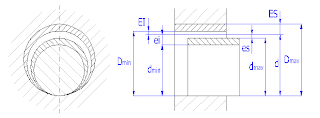screw technology - backlash
It's a common knowledge that a good and precise machinery must be one that has as little backlash as possible. Backlash is any non-movement that occurs during axis reversals. For example, the X axis is commanded to move 10mm to the positive direction. Immediately after this X movement, the X axis is commanded to move 10mm to the negative direction. If any backlash exists in the X axis, then it will not immediately start moving in the negative direction, and the motion departure will not be precisely 1 inch.
Read more
Read more





0 comments: